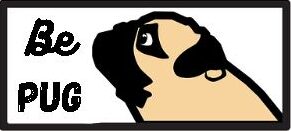Are Pugs Cheap or Costly? What Every Future Owner Should Know

Pugs have a reputation for being charming, lovable, and a little quirky—but are they budget-friendly pets? Many first-time dog owners wonder if bringing a pug into their life comes with a low price tag. While their small size might suggest modest expenses, the reality is more nuanced. From upfront costs to lifelong care, the total cost of pug ownership deserves a closer look, especially for those who want to be prepared.
Initial Cost of Buying a Pug
When purchasing a pug from a reputable breeder, expect to pay anywhere between $800 to $2,500. This price varies based on lineage, breeder reputation, and location. Pugs with champion bloodlines or rare coat colors like silver or brindle often come with higher price tags. While adopting a pug from a shelter or rescue can be cheaper—typically around $100 to $500—availability may be limited, especially if you’re looking for a purebred puppy.
Monthly Expenses for Pug Care
Pugs might be small, but their monthly care adds up. Here’s a breakdown of common costs:
- Food: Quality dry dog food for pugs ranges from $25 to $60 per month.
- Grooming: While they don’t require professional grooming often, their wrinkles need regular cleaning to avoid infections.
- Vet visits: Routine care, flea prevention, and vaccinations can run $30–$60 monthly, with additional costs for unexpected visits.
- Pet insurance: Due to common breed-specific health issues, monthly premiums can range from $25 to $50.
Health Concerns and Medical Costs
Pugs are known for their brachycephalic (flat-faced) features, which can lead to breathing issues and other complications. Common pug health problems include:
- Brachycephalic airway syndrome
- Hip dysplasia
- Eye problems like corneal ulcers
- Allergies and skin infections
Treatments for these issues can be expensive. Surgeries for breathing correction may cost upwards of $2,000, while managing chronic skin or eye conditions can lead to recurring vet bills.
Other Hidden Costs
Besides food and healthcare, there are other ongoing costs to consider:
- Accessories: Collars, leashes, bowls, beds, and toys quickly add up.
- Training: Group classes or private training may be necessary, especially for stubborn behaviors.
- Pet sitters or boarding: If you travel often, the cost of care during your absence must be factored in.
Conclusion
So, are pugs cheap? Not exactly. While they might be more affordable than some large breeds in terms of food and space needs, their potential health problems and ongoing care costs make them a moderate-to-high-maintenance breed financially. They’re worth every penny to many owners thanks to their loving personality and comedic charm, but going in with realistic expectations will help you give your pug the best life possible.






